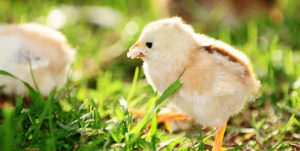Unlike laying hens and broilers, broiler feeding is usually done by improving the quality of broilers. The purpose of laying hens is to improve the quality of eggs and the laying capacity of laying hens. The bad will directly affect the growth and development of adult chickens, the survival rate, and the egg production performance during the laying period. Therefore, we must do the breeding work when we raise brooding. Only then can we get the ideal economic benefits in the later stage. Give farmers a description of the feeding techniques used in layer chicken battery cages.
1. Selection of chicks
Choose a reputable breeder farm and hatchery. The healthy chicks are strong in body, full of feel, elastic, lively, with bright eyes and no secretions. The fluff is plump and tidy, with bright colors and moderate length. The yolk is well absorbed, the umbilical opening is clean and flat, the feathers near the cloaca are clean, no white feces, and the weight should not be too large or too small.
2. Suitable ambient temperature
The temperature is low, the chicks are chilly, and the yolk is malabsorbed. It is easy to induce white sputum and even squeeze death. When the temperature is too high, the normal metabolism of the chicks is inhibited, the appetite is diminished, the constitution is weak, the development is slow, and the sputum is easily induced. Therefore, temperature is the first condition that affects the success or failure of brooding.

3. Suitable for environmental humidity
In the early stage of brooding, because the chicks breathe faster, if the air is too dry, it will affect the physiological activities and digestion and absorption of the body. Increasing the humidity can rely on ground sprinkling, heating water to distribute steam, spray disinfection and other measures.
4. Proper ventilation
Ventilation and insulation during brooding are a contradiction. Especially in winter, it is necessary to ventilate and maintain a suitable temperature. In the early stage of brooding, it should be based on heat preservation, taking into consideration ventilation and ventilation. When the temperature is not high and ventilation is required, it is usually arranged at noon or afternoon, and each ventilation time should not be too long, to avoid the temperature going up and down, generally using a skylight.
5. The density of feeding is reasonable
The density of the flock should be adjusted according to the age of the chick, the feeding method, the season and the structure of the house. As the age increases, the density should gradually decrease. The weak chicks are of poor quality and cannot withstand crowding and have low density. Reduce the density when the house is poorly ventilated.
6. Reasonable control of lighting
In addition to ensuring that the chicks can eat the feed, the light is mainly to stimulate the physiological development of the body. As the age increases, the illuminating principle of brooding is that the light intensity cannot be increased, and the illumination time should be gradually reduced and the light intensity should be reduced.
7. Scientific feeding management
Feed the chicks and start eating after the first drink. Glucose and electrolysis are added at the beginning of drinking to promote intestinal peristalsis, yolk absorption, meconium discharge, and increased appetite to facilitate eating. Maintain a reasonable density and carry out all-in and all-out feeding methods. Do a good job in environmental sanitation and disinfect in time. Establish scientific vaccination and drug prevention programs.
The above are the points that the farmers are telling about when they are brooding, and hope to help the farmers.